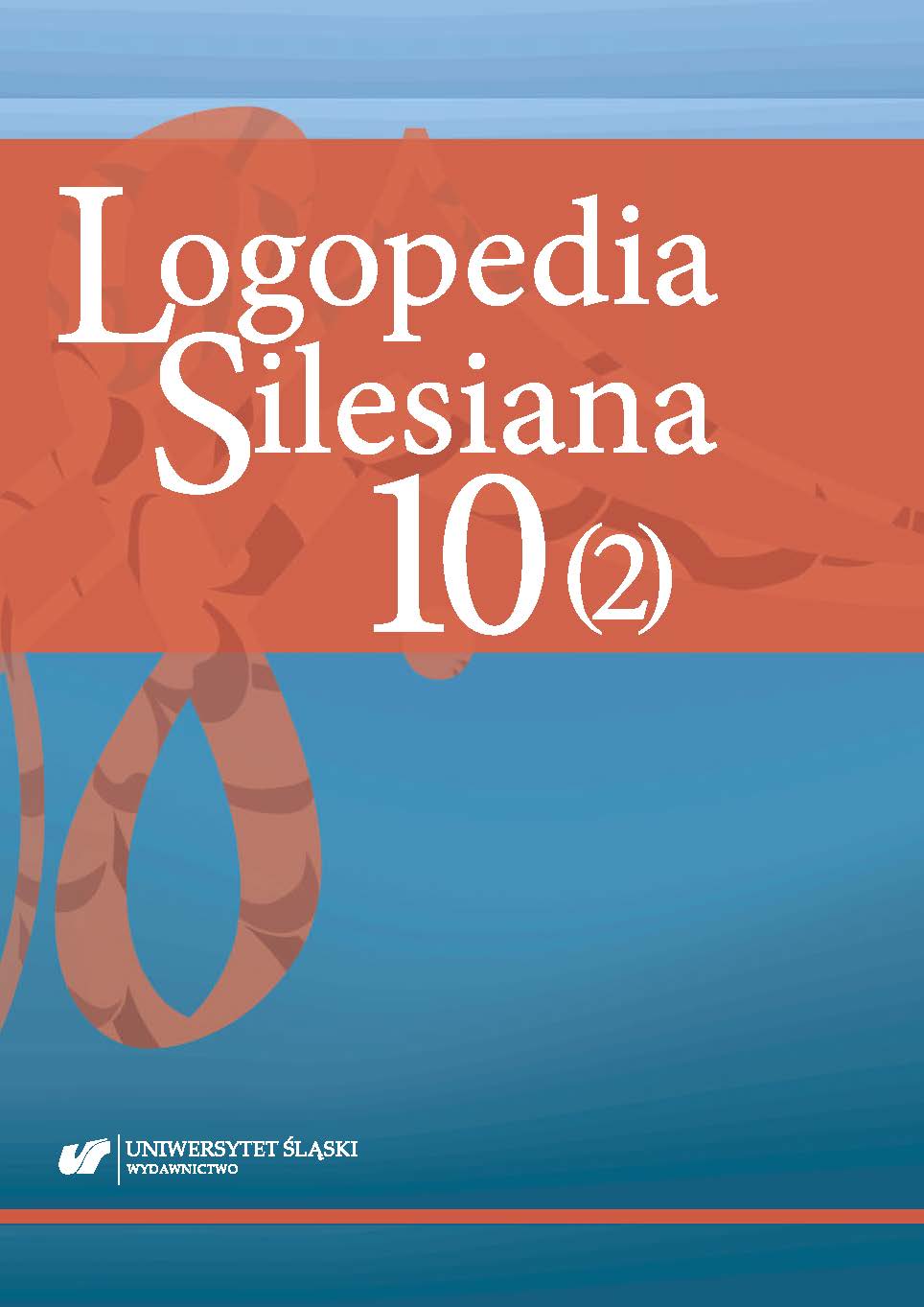Barunow-Wojewódzki, A., Marszałek, S., Rychlewski, T. (2005). Kompleksowa rehabilitacja chorych po całkowitym usunięciu krtani. Poznań: Akademia Wychowania Fizycznego im. Eugeniusza Piaseckiego.
Google Scholar
Betlejewski, S., Sinkiewicz, A. (2009). Opieka pielęgniarska po zabiegach chirurgicznych krtani. W: A. Sinkiewicz (red.), Pacjent po operacji krtani (s. 121–131). Bydgoszcz: Bydgoskie Towarzystwo Laryngektomowanych.
Google Scholar
Fabczak, M. (2017). Jak mówić bez krtani? Logotomy w służbie laryngektomowanym. Białystok: Prymat.
Google Scholar
Gretkowski, A. (2017). Problemy psychoonkologiczne chorego na raka krtani – próba pomocy i wsparcia. W: E. Jeżewska–Krasnodębska, B. Skałbania (red.), Diagnoza i terapia w pracy logopedy i nauczyciela terapeuty. Konteksty teoretyczne i praktyka (s. 137–151). Kraków: Impuls.
Google Scholar
Hamerlińska-Latecka, A. (2015a). Onkologopedia. Logopedia wobec chorób nowotworowych. Bydgoszcz: Wydawnictwo Uniwersytetu Kazimierza Wielkiego.
Google Scholar
Hamerlińska-Latecka, A. (2015b). Rehabilitacja logopedyczna osób po laryngektomii całkowitej. Materiały szkoleniowe. Bydgoszcz: Centrum Terapii Dobra Mowa.
Google Scholar
Juczyński, Z. (2000). Radzenie sobie ze stresem spowodowanym chorobą nowotworową. W: K. de Walden-Gałuszko (red.), Psychoonkologia (s. 23–44). Kraków: Biblioteka Psychiatrii Polskiej.
Google Scholar
Kamuda-Lentak, J. (2008). Standard postępowania logopedycznego w przypadku osób laryngektomowanych. Logopedia. Standardy Postępowania, 37, 207–216.
Google Scholar
Kozłowska, M. (2015). Postępowanie logopedyczne w przypadku osób laryngektomowanych. W: S. Grabias, T. Woźniak, J. Panasiuk (red.), Logopedia. Standardy postępowania logopedycznego. Podręcznik akademicki (s. 780–794). Lublin: Wydawnictwo Uniwersytetu Marii Curie-Skłodowskiej.
Google Scholar
Kübler-Ross, E. (1979). Rozmowy o śmierci i umieraniu. Warszawa: Pax.
Google Scholar
Lipiak, E. (2005). Głos przełykowy. W: A. Barunow-Wojewódzki, S. Marszałek, T. Rychlewski, Kompleksowa rehabilitacja chorych po całkowitym usunięciu krtani (s. 71–90). Poznań: Akademia Wychowania Fizycznego im. Eugeniusza Piaseckiego.
Google Scholar
Lipiec, D. (2008). Głos i mowa osób po laryngektomii. W: J. Porayski–Pomsta (red.), Diagnoza i terapia w logopedii (s. 147–159). Warszawa: Elipsa.
Google Scholar
Mackiewicz-Nartowicz, H., Mackiewicz-Milewska, M. (2009). Epidemiologia, etiologia i diagnostyka raka krtani. W: A. Sinkiewicz (red.), Pacjent po operacji krtani (s. 11–17). Bydgoszcz: Bydgoskie Towarzystwo Laryngektomowanych.
Google Scholar
Majszyk, D., Bruzgielewicz, A., Osuch-Wójcikiewicz, E. (2014). Rak krtani – epidemiologia i etiologia. Polski Przegląd Otorynolaryngologiczny, 3, 186–188.
Google Scholar
Maniecka-Aleksandrowicz, B. (2002). Głos i rehabilitacja głosu u chorych po leczeniu raka krtani i gardła dolnego. W: G. Janczewski, E. Osuch-Wójcikiewicz (red.), Rak krtani i gardła dolnego (s. 229–239). Bielsko-Biała: Alfa-Medica Press.
Google Scholar
Pruszewicz, A. (red.). (1992). Foniatria kliniczna. Warszawa: Państwowy Zakład Wydawnictw Lekarskich.
Google Scholar
Pruszewicz, A., Obrębowski, A., Kraśny, J. (2012). Zasady rehabilitacji chorych po chirurgicznym leczeniu zmian nowotworowych krtani (całkowite i częściowe laryngektomie). W: A. Obrębowski (red.), Wprowadzenie do neurologopedii (s. 381–388). Poznań: Termedia.
Google Scholar
Sinkiewicz, A., Mackiewicz-Nartowicz, H. (2009). Zmiany funkcjonowania narządów po laryngektomii całkowitej. W: A. Sinkiewicz (red.), Pacjent po operacji krtani (s. 51–62). Bydgoszcz: Bydgoskie Towarzystwo Laryngektomowanych.
Google Scholar
Sokal, W. (2011). Możliwości komunikacji werbalnej chorych po całkowitym usunięciu krtani. Poznań: Uniwersytet Medyczny im. Karola Marcinkowskiego.
Google Scholar
Walden-Gałuszko, K. de (2011). Psychoonkologia w praktyce klinicznej. Warszawa: Wydawnictwo Lekarskie PZWL.
Google Scholar
Zatoński, W., Zatoński, T. (2002). Epidemiologia nowotworów złośliwych krtani. W: G. Janczewski, E. Osuch-Wójcikiewicz (red.), Rak krtani i gardła dolnego (s. 15–29). Bielsko-Biała: Alfa-Medica Press.
Google Scholar


 https://doi.org/10.31261/LOGOPEDIASILESIANA.2021.10.02.01
https://doi.org/10.31261/LOGOPEDIASILESIANA.2021.10.02.01

 10.31261/LOGOPEDIASILESIANA
10.31261/LOGOPEDIASILESIANA